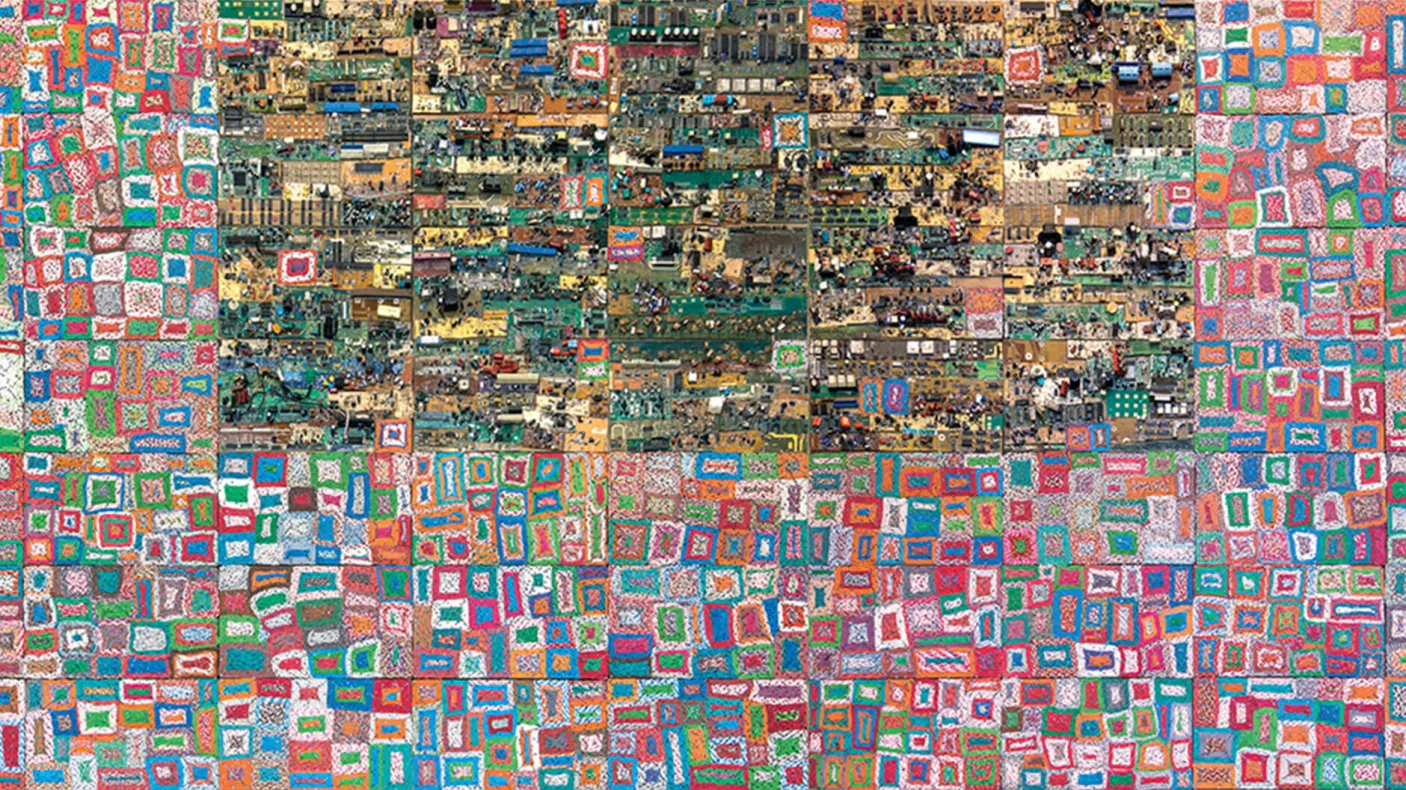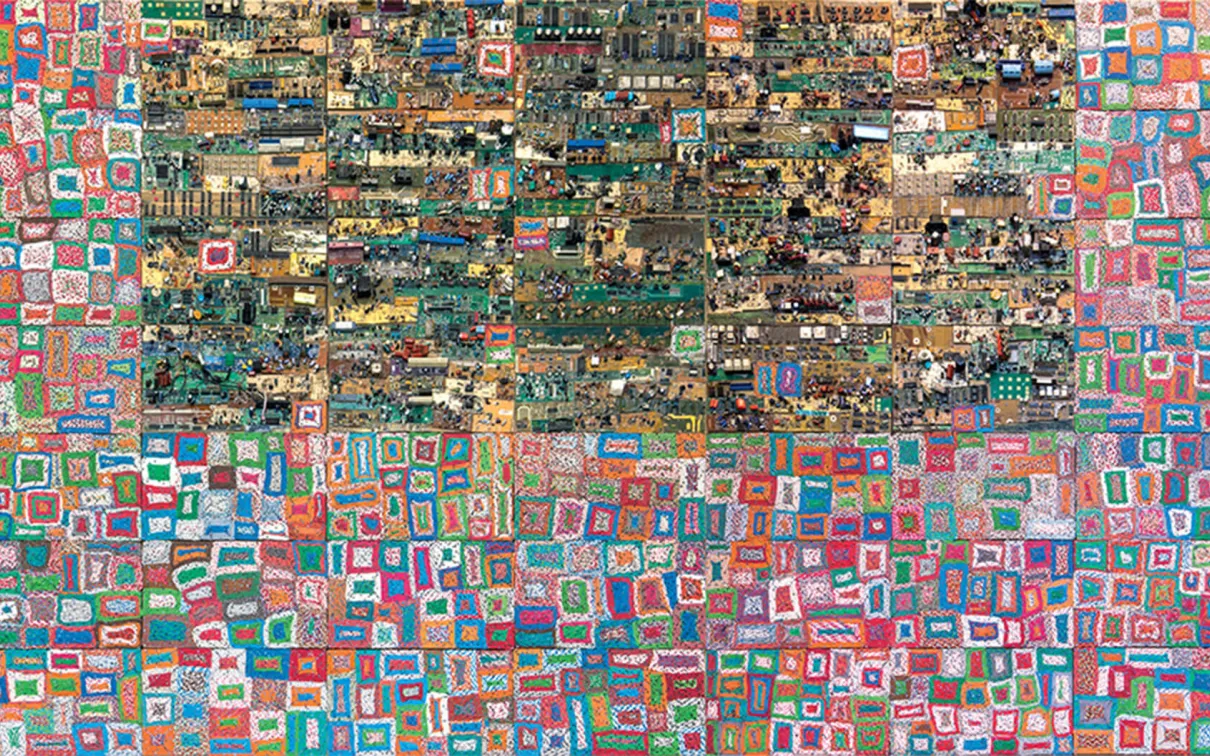Balancing Humanity and the Environment Through Art
A closer look at Elias Sime’s Tightrope
Published
Category
Author
Contemporary art present
Contemporary art presents a window into the world in which we live. Artists such as Elias Sime are often careful observers and critics of the society of their time. Sime’s work is the oeuvre of a master that engages playfully with different art historical registers, from figuration to abstraction. Tightrope is an ongoing series that Sime has been producing over the last decade. Through his art, Sime invites us to reflect on the delicate balance between humanity and the environment in our contemporary world.
By choosing not to work with paint but to source his materials amongst the heaps of electronic waste of the Addis Ababa market (Mercato), Sime draws our attention to the complexity of the contemporary experience and the inescapable tensions between nature and human constructions that characterizes our lives, no matter where we live.
Trained as a painter, Sime has experimented with a variety of materials that he uses as a palette for his complex compositions. While he masterfully plays with the brilliant greens of the motherboards and the hues of telephone wires, he is also quite consciously engaging with the materiality of the electronic components he selects for his compositions. His material choices also point to the complex trajectories that have brought the electronic components to the Mercato of Addis Ababa, where he has acquired them. Cellular phones and computers have become indispensable tools for communication. We rely on them to work and keep in touch with our loved ones. They are also quintessential global commodities. They are made of parts invented or made in different countries, combined, manufactured, and sold across the globe, sometimes repurposed, and finally discarded, often quite far from where they were produced and used.
Sime draws our attention to the complexity of the contemporary experience and the inescapable tensions between nature and human constructions that characterize our lives, no matter where we live.
With his choice of materials
With his choice of materials, Sime is referencing not just the global flow of commodities, but also the structural imbalances that result in large amounts of electronic waste accumulating in Addis and other African cities. African markets are flooded with cheap technology and second-hand computers, cell phones, and appliances often shipped to Africa to end their functioning lives. The tightrope that these materials evoke is thus also one of global ecological sustainability.
For Sime, humans are “the bridge between the natural and built environment.” What we build and the environment we live in are connected in profound and inescapable ways. Our progress and technological advancements transform not only the way we live and interact with one another, but also the environment on a local and global level. Sime’s art invites a critical reflection on the Anthropocene but balances it with the human desire for beauty, poetry, and connectedness. He positions the viewer at the intersection of art, culture, and nature, forcing us to think about our contemporary humanity and our shared responsibility toward the environment.
Silvia Forni
Silvia Forni is Senior Curator of Global Africa at the ROM.


